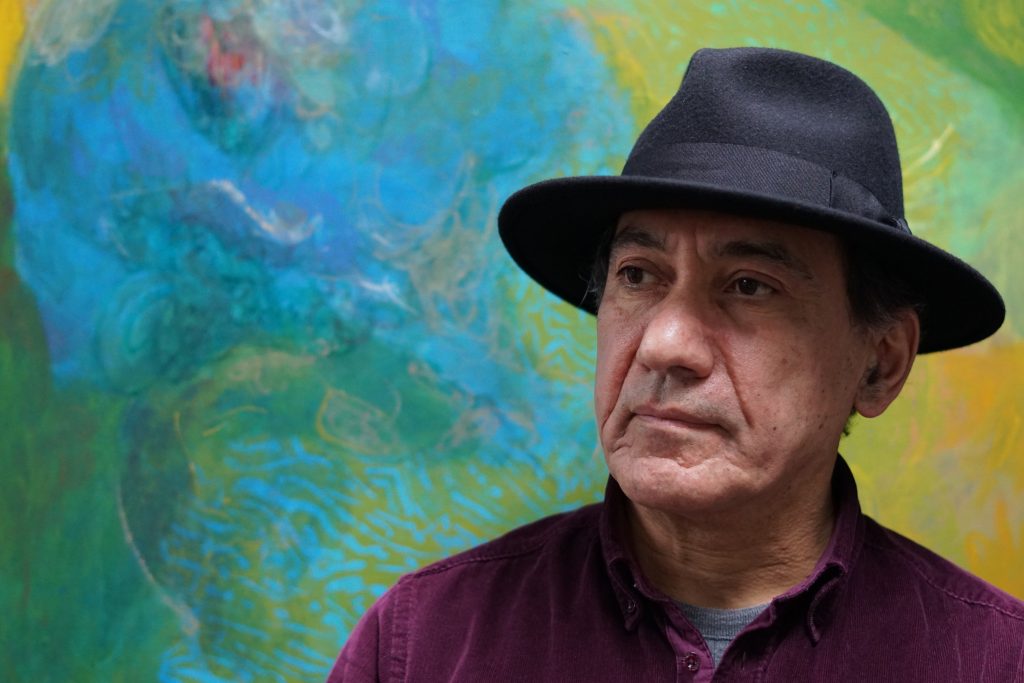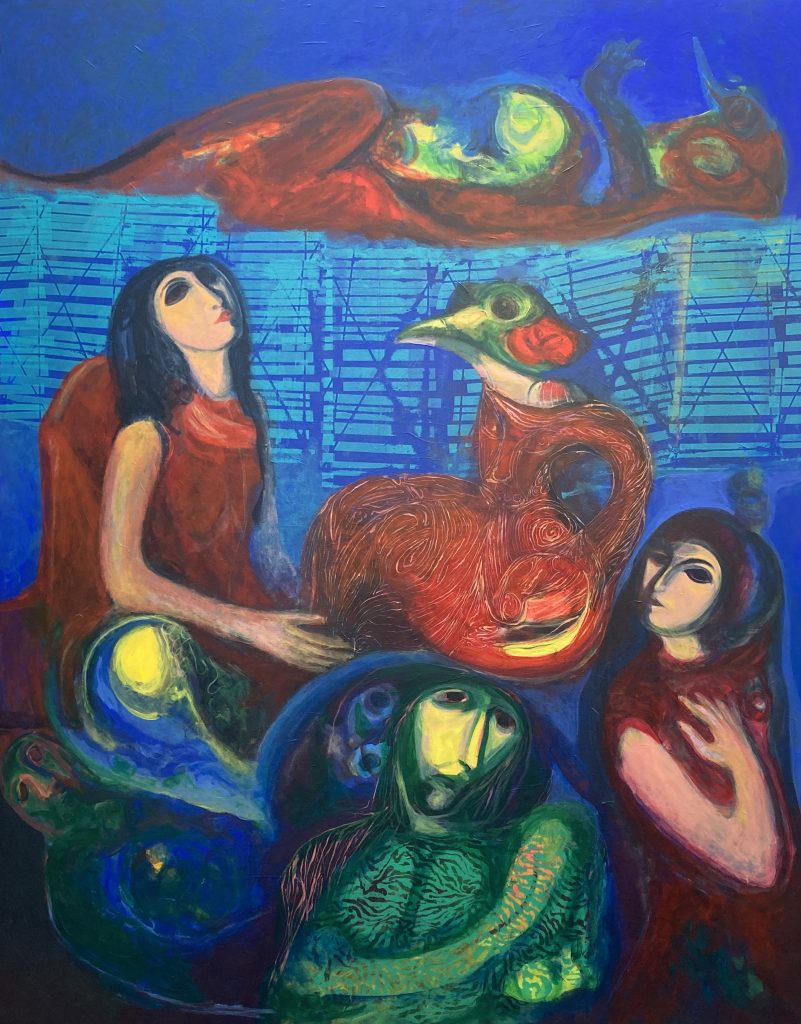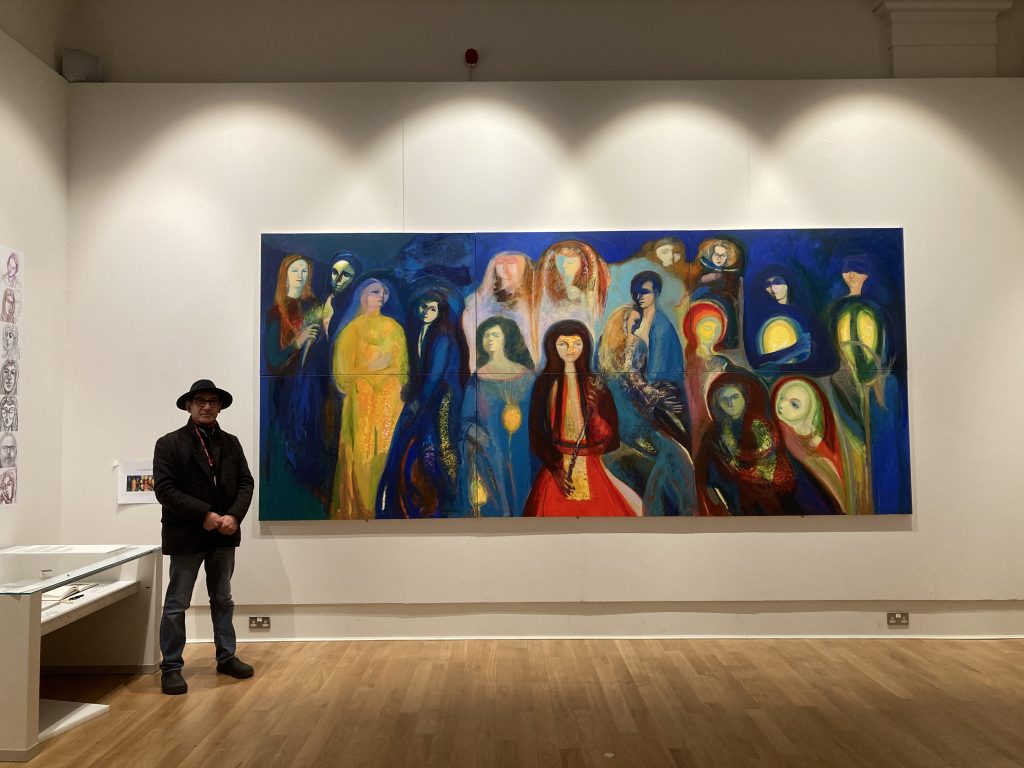Satta Hashem didn’t become an artist because it was easy. He became one because he had no other choice.
Born in Iraq, Hashem knew by the age of fifteen that art was his calling. But in the political climate of 1970s Baghdad, artistic ambition came with obstacles far beyond creative struggle. When he applied to art school in 1974, he was rejected— not for lack of talent, but for lack of political allegiance. The regime demanded conformity; Hashem offered only truth.

Picture: Satta Hashem
“My father wanted me to be an engineer,” he recalls. “He said, ‘There’s no money in art.’ And I told him, ‘There’s no art in money.’”
That quiet defiance became the foundation of a life shaped by colour, emotion, and persistence.
In 1978, at just eighteen years old, Hashem faced a grim choice: join Saddam Hussein’s army or go to prison. His family, openly opposed to the regime, was under pressure. He fled Iraq with no guarantee of safety or stability, only a certainty that art was his path. His journey took to him to Algeria, through Russia, then Sweden, and eventually to the UK, where he arrived in Leicester in 2000.
“Art was never a career option for me,” he says. “It was survival. It was the way I thought – the way I processed the world.”

Picture credit: Satta Hashem
In 2004, Hashem launched a project that would mark a turning point in his practice-and in the way audiences connected with his work. Colour and Mind, exhibited at Nottingham Castle Museum, explored the emotional and psychological impact of colour. It wasn’t just a visual experience; it was an invitation to feel.
“Blue; the colour of mystery, beauty and serenity. Green the visual signature for health and cleanliness. Red for energy; heroism, martyrdom, hellfire, love, youth, passion, pride, sin, and redemption.
“Hashem explains. “People told me they felt soothed or awakened. That surprised me, but it also confirmed what I always believed:
“Colour isn’t something we apply—it’s something we absorb.“
For Hashem, colour is not a surface. It’s a language. A way of speaking when words fall short.
Though his artistic journey began in Baghdad and stretched across continents, it was Leicester that gave Hashem a sense of grounding, and the community he craved. The city’s multicultural vibrancy and collaborative spirit inspired him. Festivals like the Caribbean Carnival brought colour to the streets, and he brought that energy into his studio.
“The city gallery played a crucial role in my early years here,” he says. “From Leicester, I began to participate in international exhibitions and found a new rhythm.”

Picture credit: Satta Hashem
Earlier this year, Leicester Museum & Art Gallery hosted ‘A World of Colour and Emotion,’ the largest retrospective of Satta Hashem’s life. Spanning 25 years of work in the UK—and a lifetime of memories—it drew more than 18,000 visitors. Some came to view the collection multiple times. Families returned together. Strangers became followers.
“It was overwhelming,” the artist admits. “Not just because of the numbers, but because people felt something. They connected. And that’s all I’ve ever wanted—to create a conversation, not just from me to them, but back again.
His goal is never purely aesthetic.
“ I try to present something psychological, to communicate visually and emotionally. What affects me, affects others. We’re all sharing this world. ”
Every one of Hashem’s paintings undergoes a long, thoughtful evolution. Some take six months to complete. None are rushed.
“Each piece holds many moods, many days. Meditation is part of my process. I can’t paint unless I’ve spent time in reflection,” he tells Pukaar.
He doesn’t believe in waiting for inspiration. “That’s the difference between amateurs and professionals,” he says. “A professional goes to inspiration. Works every day, even an hour. Keeps going no matter what.”
To young artists—especially those navigating new cultures, new languages, or new systems—Hashem offers this:
“Stay close to your art, even if it’s part-time. Teach, volunteer, be in the world of creativity. Don’t drift too far from your passion.”
And most importantly, he says, don’t create to be a celebrity. Create to be an artist. “Fame is something else. Art is deeper.”

Picture credit: Satta Hashem
Looking back, Hashem is convinced that his path was not a decision but a necessity.
“If I had become an engineer like my father wanted, maybe I would have ended up in a mental hospital,” he says, half-joking but deeply honest. “I was never meant to see the world in that way. A scientist might ask why the sky is blue. But an artist looks at the rain and says, ‘The sky is crying.’ That’s the way I live. That’s how I survive.”
For Satta Hashem, colour is not a tool—it is a force. Art is not a profession—it is a life. And passion is not a choice—it is the only way forward.
To find out more about his work, visit: www.sattahashem.com





